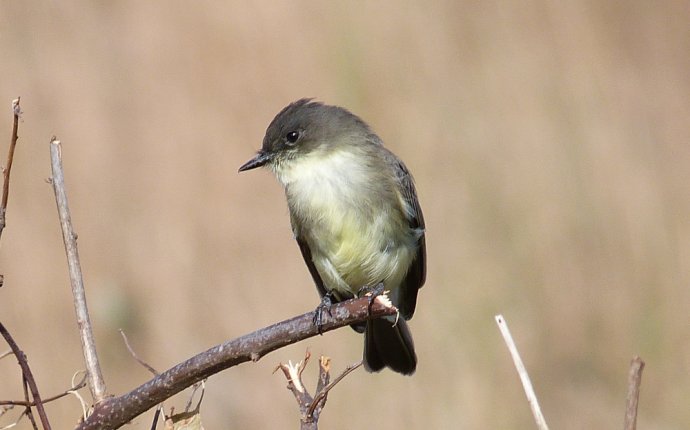
Sayornis Phoebe
Imitative song development, its requisite auditory feedback, and the underlying neural control of learned song are becoming increasingly well known in songbirds, but the evolution of these characteristics from songbird ancestors is poorly understood. Suboscine flycatchers, which belong to the evolutionary sister group of the oscine songbirds (in the same order, Passeriformes), are thought not to imitate songs from other individuals. This study therefore examines the role of auditory feedback in song development and provides preliminary comments on neural control. Four eastern phoebes, Sayornis phoebe, were collected at 10–12 days of age and hand-reared in the laboratory; at approximately 35 days of age, before they began to sing, the birds were bilaterally deafened by removal of the cochlea. Songs of these phoebes, two males and two females, were judged to be normal when compared with songs of males recorded in nature and to songs of laboratory-reared, intact males and females. Like several non-passerines (representatives of Galliformes and Columbiformes), the eastern phoebe requires no auditory feedback for normal vocal development. Brain sections of phoebes contain no obvious cell clusters like the forebrain song nuclei of songbirds. If some of these nuclei mediate auditory feedback control of song development, the apparent absence of these nuclei in the phoebe is consistent with its ability to develop normal song without auditory feedback.









